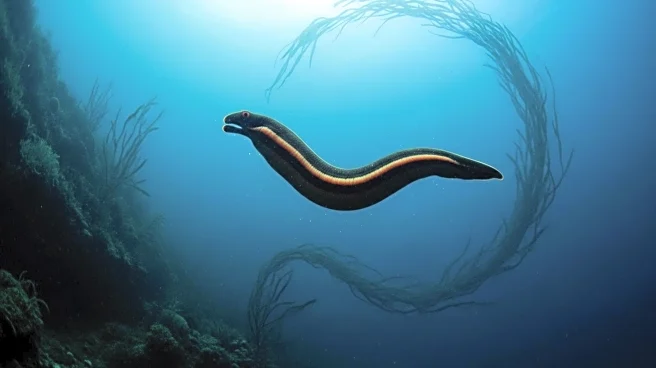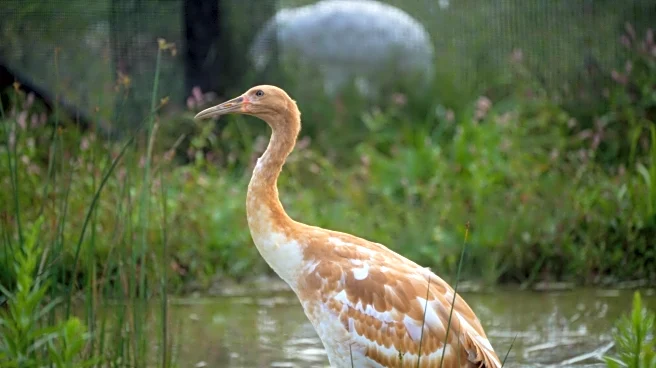What is the story about?
What's Happening?
Researchers from the University of California, Riverside, in collaboration with other institutions, have uncovered a fossil that suggests leeches are at least 200 million years older than previously thought. The fossil, found in the Waukesha biota in Wisconsin, indicates that early leeches were marine hunters, consuming soft-bodied invertebrates rather than feeding on blood. This discovery challenges the previous timeline, which estimated leeches emerged around 150-200 million years ago. The fossil, approximately 430 million years old, features a large tail sucker and a segmented body but lacks the forward sucker used by modern leeches to draw blood. This suggests that early leeches had a different lifestyle, possibly swallowing prey whole or drinking internal fluids of marine animals.
Why It's Important?
This discovery significantly alters the understanding of leech evolution and their ecological roles in ancient marine environments. By pushing back the timeline of leech emergence by 200 million years, the research provides new insights into the evolutionary history of complex life forms. The findings highlight the adaptability and diversity of leeches, which are now found in various environments, including freshwater, saltwater, and terrestrial habitats. Understanding the origins of leeches can inform studies on evolutionary biology and the development of specialized feeding mechanisms. The research also underscores the importance of fossil records in revealing unexpected aspects of ancient life.
What's Next?
The study opens avenues for further research into the evolutionary history of leeches and other soft-bodied organisms. Researchers may continue to explore the Waukesha biota and similar geological formations to uncover more fossils that could provide additional insights into early marine ecosystems. The collaboration between paleontologists and leech specialists may lead to new discoveries about the adaptations and ecological roles of leeches throughout history. Future studies could focus on the genetic and physiological changes that enabled leeches to transition from marine hunters to blood-feeding parasites.
Beyond the Headlines
The discovery of ancient ocean-hunting leeches raises questions about the evolutionary pressures that led to the development of blood-feeding mechanisms. It also highlights the challenges of preserving soft-bodied fossils, which require specific environmental conditions. The research contributes to a broader understanding of the complexity and diversity of life forms in ancient ecosystems, challenging assumptions about the past and encouraging a reevaluation of the evolutionary tree of life.
AI Generated Content
Do you find this article useful?















